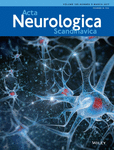Antiepileptic drugs, foetal malformations and spontaneous abortions
Abstract
Background
Some recent studies have found an association between foetal malformations in earlier antiepileptic drug (AED)-exposed pregnancies and an increased hazard of such malformations in subsequent pregnancies. We investigated this matter further, and also considered the possible role of spontaneous abortions in previous pregnancies, in this situation.
Methods
Analysis of foetal malformation data for current and previous pregnancies in women taking AEDs and women with untreated epilepsy in the Australian Register of Antiepileptic Drugs in Pregnancy (APR) from 1999 to late 2014.
Results
Antiepileptic drug-treated women with either a malformed foetus or a spontaneous abortion in their previous pregnancy had a statistically significant twofold to threefold increased risk of foetal malformation in their next pregnancy, compared with similarly treated women with normal offspring in their previous pregnancy. This was not seen in the same circumstances in women with untreated epilepsy. On AED treatment, the women were more likely to have spontaneous abortions than in their previous untreated pregnancies. Possibly some of the increased abortion rate resulted from drug-related malformations that were incompatible with continuing intrauterine survival.
Conclusions
In assessing the hazard of an AED-treated woman having a malformed foetus, it is important to know both the AEDs being taken and, if there had been a previous pregnancy, whether a foetal malformation or a spontaneous abortion occurred in it.




